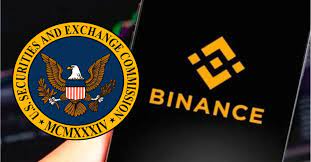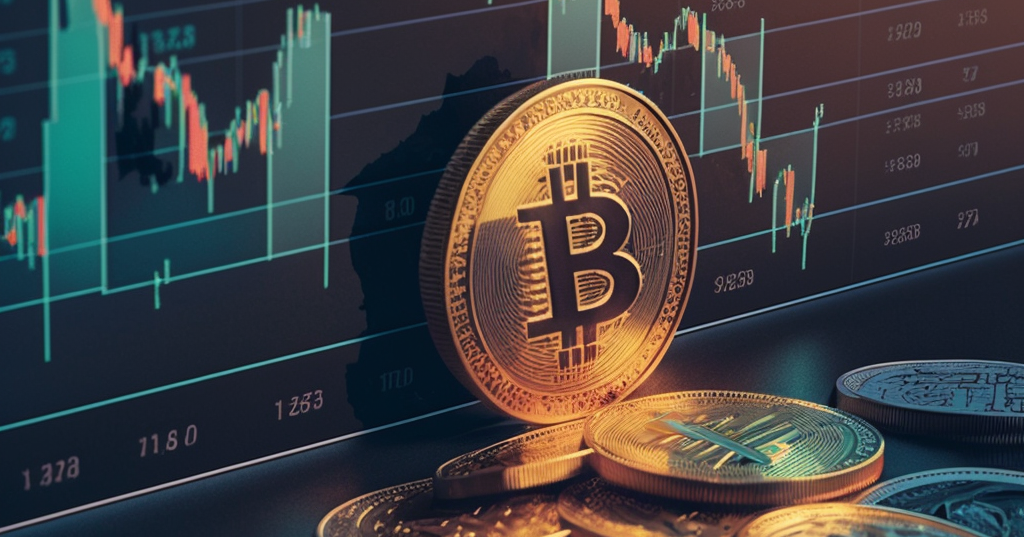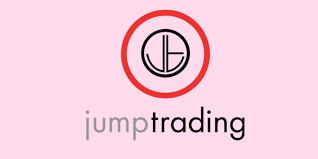Introduction | DAI's Deformation Tour
Editor's Note: This article is about a series of financial products with DAIs in the Ethereum network that can be used as financial derivatives of the stable currency DAI. I think that this article can be used as a glimpse of DeFi's new products, or as an empirical study of Ethereum's "combinability."

DeFi has reached the escape speed (Translator's Note: The idea is that it has reached the point where it can break out)! Now that the basic elements are ready, we are entering the era of a combination of new products, driven by the endless creativity of the Ethereum community. New products are available every day, making it impossible to follow up on all new projects and tools. Don't worry, this article will help you understand these new products.
DAI

- Detailed AirSwap Smart Contract Vulnerability: User assets can be maliciously eaten by attackers?
- Monetary policy for cryptocurrency
- US stocks fell gold, bitcoin is farther away from “safe haven assets”
The most original stable currency endorsed by collateral was created by MakerDAO. It has become the most commonly used unit of account in the DeFi ecosystem. Dai uses the Mortgage Debt (CDP) to endorse its value, and now only ETH can be used as collateral. Multi-mortgage Dai has already seen the dawn, only a small number of updates can be released. Learn more at MakerDAO.com.
xDAI

xDAI is the first DAI derivative. In the beginning, xDAI was placed on a side chain of a Proof of Enforcement (POA), on which people could use xDAI to transfer money without friction. The xDAI now runs on a DPoS sidechain that uses the POSDAO consensus algorithm. POSDAO is implemented through a common set of BFT consensus protocols (such as using a proposer node, an Authority Round that achieves probability certainty, or a real-deterministic Honey Badger BFT without a block leader and realizable). General agreement). The agreement also arranges an adjustable reward structure to motivate the verifier to align the interests of the latter with the fundamental interests of the entire network. The algorithm also provides anti-witch mechanisms for managing verifier collections, distributing revenue, reporting, and punishing malicious verifiers [1]. You can use xDAI on xdai.io.
iDAI

iDAI is a concept presented by bZx in an article written in 1987 with MakerDAO. The technical details were released in March 2019. iDAI was the first to introduce the powerful concept of “tokens and lending funds” into the community. The value of iDAI will continue to accumulate and its price will continue to rise as its underlying assets will be loaned to lenders. iDAI has two salient features: First, its interest is calculated in seconds (rather than in blocks); second, if the underlying asset pool suffers losses, its price will also drop. This makes it ideal for developing risk management derivatives on top of it. You can cast iDAI with fulcrum.trade.
cDAI

The decentralized lending agreement Compound first proposed the concept of cToken and cDAI in April 2019, when they released Compound v2. Similar to iDAI, cDAI is also a token-based lending pool that accumulates value as the underlying DAI continues to lend to lenders. There are two core differences between cDAI and iDAI in architecture: First, it still calculates interest on a block basis; second, even if the underlying fund pool suffers losses, the price of cDAI and DAI will not decrease. If a black swan event breaks out, this may lead to a run, and the last borrower who takes out the asset will bear the full loss. Can be cast on compound.finance.
rDAI

Rtoken , or Reedemable Token ("redeemable token"), is an ECR20 token that is 1:1 redeemable with the ERC20 token behind it. The underlying tokens are invested in interest-bearing agreements based on allocation strategies, such as the Compound and Fulcrum protocols. Holders of RToken can use a definition called hat to specify the beneficiary of interest. Rtoken can be used for community funds, charity, crowdfunding, and more. It can also be used as a component of the dApp, if people use that dApp to lock the token, but the user does not want to give up interest [2]. Learn more at redeem.money.
gDAI

gDAI was developed during the ETHBoston hackathon by CryptoManiacsZone (also known as the team behind 1inch.exchange). It uses Fulcrum to lend assets, while using GasStationNetwork, Kyber, and Uniswap, allowing users to pay for Gas charges with DAI. This is the first type of DAI that can be earned on the chain without having to consider Gas's DAI. You can try it on gdai.io.
dDAI
dDAI is rDAI encountering gDAI. dDAI uses Fulcrum's iDAI to lend assets and uses Gas Station Network to implement transactions that do not require ETH to pay for Gas. It extends the hat in rDAI and creates a "receipt". These receipts allow people to initiate a callback to the receiving contract, and they can also add data to the callback function. It integrates with GSN, so users can use DAI to pay transaction fees. This is a project developed during the Kyber DeFi hackathon and can be found at dDAI Devpost for more information.
LSDai

LSDai is a DAI interest rate derivatives market built on the Market protocol and rDai, and debuted at ETH Berlin. LSDai has created a structure similar to the Euro-dollar, which is the futures of the Compound Dai deposit rate during the contract period. This is done using the Market protocol, which builds exponential futures through the "iron-cross option". LSDai decouples the risks of both parties through bullish and bearish tokens [4]. You can try it out on lsdai.market.
IdleDAI
IdleDAI is a DAI used as a token-based DeFi rebalancing mechanism. IdleDAI was born during the Gitcoin Beyond Blockchain. After depositing your DAI into the Idle contract, you can receive IdleDAI, and your DAI will automatically lend to the lenders in the Fulcrum or Compound market to see which deposit rate is high. IdleDAI is a token, so it can be easily combined with other protocols. You can find out more at Idle.Finance.
SwanDAI

– New logo for Nassim Taleb –
SwanDAI is a synthetic asset that uses the DAI/USDC API of the Coinbase exchange to track the price deviation of the DAI from the anchor price (one dollar) in an exponential manner. Upon expiration, the contract will be fully traded at the index price. Buyers receive a time premium as a reward for their reduced risk of DAI anchoring [5].
iSwanDAI
iSwanDAI is a synthetic asset that uses Fulcrum Smart Contracts to track the deviation between the price of iDAI and the highest price it records. Upon expiration, the contract will be fully traded at the index price. Sellers receive a time premium as a reward for their risk. Unlike SwanDAI, which only covers the risk of DAI anchoring, iSwanDAI actually covers multiple risks such as iDAI contract hacking, Fulcrum not clearing lenders, and DAI anchoring. The point is that this mode is only useful for iDAI, not useful for Compound's cDAI, because the price of iDAI may drop, while cDAI does not. iSwanDAI has not been developed yet, so it is good to be a hacker.
Aztec Note

Aztec Note is a special form of DAI that guarantees the confidentiality of senders, recipients and transfer amounts. Aztec uses zero-knowledge proof to achieve this, but not ZK-SNARK technology, but an algebraic zero-knowledge proof that uses Boneh-Boyen signatures to create a commitment mechanism in every promise. Embed an efficient range proof. This makes Aztec Note a practical and cost-effective confidential transaction. Learn more here or visit aztecprotocol.com.
zkDAI

– I like to pretend that this is a tailings –
zkDAI uses ZKSNARK to conceal the sender, receiver and transfer amount of the transaction. The project is also the winner of the MakerDAO API Awards on ETHSingapore. The ZKSNARK implementation it uses is inspired by Zcash. ZKDAI's notes are used just like UTXO. When you want to send a certain amount to the recipient, you have to choose some confidential notes whose net value is greater than or equal to the value you want to transfer. The value is sent to the recipient in the form of a new zkDAI ticket, and the remaining value forms a new, confidential note signed with your key [7]. One disadvantage of this approach is that ZKSNARK requires a lot of Gas, so it can be expensive to use.
pDAI

PoolDAI is a risk-free donation agreement that allows people to bring money together, lend them, and donate interest to a project. PoolDAI is built on Compound, KyberNetwork, TheGraph, and Blocknative. The founder was Zefram Lou, the founder of Betoken.fund.
aDAI

aDAI is still in development, but it has been launched online, and the AAVE team uses it as part of Decentralized Lending Pools (DLP). The principle of aDAI is the same as that of iDAI. Interest is calculated in seconds and accumulated. If the underlying asset pool suffers losses, its price will also drop. This allows aDAI to be used as a LEGO brick in risk management products.
nmDAI
nnmDAI can integrate the risk of Nexus Mutual into iDAI, IdleDAI or cDAI. This makes it a risk taker to hedge the risk of hacking smart contracts. The product is still in the theoretical stage and has not yet been developed. Hugh Karp pointed out that before the actual line, some problems need to be resolved in the agreement.
wxDAI
weDAI is a packaged xDAI that runs on the Ethereum main network as an ERC20. xDAI is the native token on the xDAI chain, but it is distributed on the xDAI chain by the DAI that is locked on the Ethereum main network. If the user returns xDAI with the xDAI chain bridge, then these xDAIs are destroyed and the corresponding number of DAIs are also unlocked. If the user uses the wxDAI chain bridge to transmit xDAI, these xDAIs are locked on the xDAI chain and then the corresponding number of wxDAIs are released on the Ethereum main network. When wxDai is unlocked, its number is 1:1 compared to xDAI and 1:1 with DAI.
One use of xDAI is to lock onto the xDAI chain bridge and re-mortgage the locked DAI in the form of rDAI. The unlocked xDAI, if you want to return to the Ethereum main network, will cause the DAI to be removed from the rDAI. Therefore, the unlocked xDAI can be converted to wxDAI through another chain bridge (using casting instead of destruction) and then back to the Ethereum main network to provide liquidity to the market.
yDAI
Proposed by Dan Robinson of Paradigm, using yDAI allows you to take advantage of bullish assets that use DAI as the unit of account. Buying yDAI is equivalent to lending funds to charge interest on the other hand. One disadvantage of yDAI is that it is not permanent and must roll interest on a regular basis. The difference between the current price and the due price reflects its real interest rate, allowing us to build the first yield curve in DeFi.
MetaDAI/MaxDAI/rfDAI
Proposed by Jacob Schiach of MetaMoneyMarket, MetaDAI or MaxDAI is a token rebalancer much like IdleDAI. MetaDAI is currently rebalanced in both the Compound and dYdX markets; MaxDAI will rebalance between Fulcrum, Compound and dYdX. Jacob is investigating how MaxDAI can achieve risk-free interest rates through an insurance mechanism like Nexus Mutual, originally named rfDAI.
(Finish)
Original link: https://medium.com/bzxnetwork/a-tour-of-the-varieties-of-dai-9ff155f7666c
Author: Kyle J Kistner
Translation: Ajian
We will continue to update Blocking; if you have any questions or suggestions, please contact us!
Was this article helpful?
93 out of 132 found this helpful
Related articles
- Cook: Apple has no intention of pushing digital cryptocurrencies, hoping that trade barriers in Europe and the United States will return to normal.
- How to understand "token economics"?
- Blockchain + genetic testing feasible? Sequencing the genome without exposing personal information!
- Market Analysis: BTC is weaker in the upward will, and needs to follow up the opportunity rhythm
- Heavy! PayPal or Libra project that will quit Facebook
- Managing 12 billion assets, Stone Ridge wants to launch Bitcoin Futures Fund
- After completing DeFi to stabilize the currency, Ruibo wants to build another MakerDAO?






